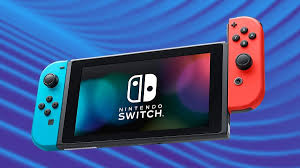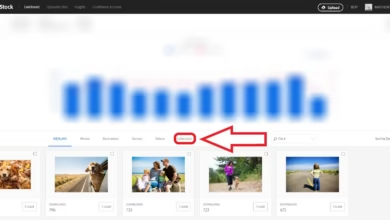Exploring the Best Emulators for Switch: A Comprehensive Guide

Introduction to Emulators for Switch
Emulators are software applications that enable one computer system to mimic the functions of another, allowing users to run applications or games on devices they were not originally designed for. In the context of the Nintendo Switch, emulators for Switch allow users to play Switch titles on various platforms, including personal computers and mobile devices. This capability is particularly appealing to gamers who wish to experience exclusive titles without the need for a physical Switch console.
The operation of an emulator hinges on recreating the hardware environment of the original system. This involves translating the game code into a format that the host system can understand, which often requires powerful hardware and efficient coding. Consequently, the performance of emulators for Switch can vary, depending on the capabilities of the device on which they are emulated. Users typically seek emulators that provide a high degree of compatibility and minimal latency, to enjoy a seamless gaming experience comparable to that of the native console.
Interest in emulators for Switch has surged due to the convenience they offer, enabling gamers to play their favorite titles on larger screens or on devices equipped with higher specifications. Furthermore, these emulators often come with features that enhance the gaming experience, such as graphical improvements and save state options not available on the original hardware.
However, the use of emulators raises important legal and ethical considerations. While using an emulator itself is generally legal, the legality of the games played on them can vary. Downloading ROMs from unofficial sources can infringe on copyright laws, as these games are still protected intellectual property. As such, it is imperative for users to be aware of and adhere to these regulations while exploring the wide array of emulators available for the Switch.
Top Emulators for Switch: Features and Comparisons
When it comes to emulating Nintendo Switch games, several options have emerged as prominent contenders. This section evaluates the leading emulators for Switch, focusing on their unique features, performance metrics, and compatibility with various titles, providing a comprehensive understanding of what each emulator offers.
The first emulator worth mentioning is Yuzu. Developed by the creators of Citra, Yuzu has quickly become a favorite for many users attempting to run Switch games on PC. It boasts impressive compatibility with a wide range of titles and is continually updated to improve performance and reduce bugs. Yuzu supports both OpenGL and Vulkan, giving users flexibility in rendering methods, with Vulkan generally offering better performance in recent titles. Furthermore, it features a user-friendly interface, allowing even novice users to configure settings without difficulty.
Ryujinx is another significant player in the emulation scene. This emulator emphasizes stability and performance. Its ability to run a substantial library of Switch games makes it highly regarded among gamers. Ryujinx features easy setup and a straightforward interface. It is built with a focus on user experience, offering various settings to optimize performance based on the user’s hardware. The emulator also supports online multiplayer, enhancing the gaming experience for those looking to relive their favorite multiplayer titles.

To streamline the process of choosing the right emulator for a specific need, a comparison table summarizing the system requirements, supported games, and interface features for both Yuzu and Ryujinx is provided below. This table, along with the evaluations, can assist users in making an informed decision based on their individual gaming preferences and system capabilities.
| Emulator | System Requirements | Supported Games | User Interface |
|---|---|---|---|
| Yuzu | Minimum: Intel Core i5 / 8GB RAM | High Compatibility | User-Friendly |
| Ryujinx | Minimum: AMD Ryzen 3 / 4GB RAM | Very High Compatibility | Simple and Intuitive |
How to Set Up and Use Emulators for Switch
Setting up and using emulators for Switch can be a straightforward process when approached methodically. Begin by choosing a reputable emulator such as Yuzu or Ryujinx, both of which have been well-received for their performance and compatibility. The first step is to download the latest version from the official website of the selected emulator. Verify the integrity of the downloaded files to ensure a clean installation free from malware.
Once the emulator has been downloaded, run the installer. Follow the on-screen instructions, and choose a suitable installation location. After the installation is complete, you will need to configure the emulator settings for optimal performance. Start by accessing the configuration menu, where you can adjust graphics, audio, and control settings according to your system’s specifications. It is advisable to review online forums or the emulator’s documentation to identify recommended settings tailored to your hardware.
Next, you will need game ROMs to use with your emulator. Legally obtaining these ROMs is vital, so consider sourcing them from your personal library of Nintendo Switch games. If you own physical copies, various tools and software applications can help you extract ROMs legally. Additionally, managing your game library within the emulator is essential; many emulators provide intuitive interfaces to add and organize your games efficiently.
In case of any issues during the setup, keeping an eye on updates and community forums can provide valuable troubleshooting tips. Common problems may arise from system compatibility or incorrect configuration settings, so exploring these resources can enhance your gaming experience. By following these steps, you can set up and use emulators for Switch effectively, maximizing your enjoyment of classic and modern games alike.
Future of Switch Emulation and Conclusion
The future of emulators for Switch appears vibrant and promising, as advancements in technology continue to evolve rapidly. The emulator community actively finds innovative ways to improve compatibility and performance, making the gaming experience increasingly seamless. With the ongoing progress in graphics processing units (GPUs) and the development of more powerful hardware configurations, the performance of Switch emulators is likely to see significant enhancements. These improvements will provide users with the ability to enjoy titles that were once challenging to emulate smoothly.
Moreover, recent innovations in artificial intelligence and machine learning may also play a crucial role in the future of emulator development. Such technologies could enable emulators for Switch to optimize performance automatically, fine-tuning settings based on hardware specifications and individual preferences. This would not only simplify the user experience but also encourage more individuals to delve into the world of emulation. As demand for retro and classic gaming experiences continues to rise, the emulator community is well-positioned to adapt and thrive.
However, it is essential to remain aware of the potential legal implications associated with using emulators for Switch. Many emulator developers advocate for responsible use, emphasizing the need for users to only employ legally obtained games. As legislation around digital content continues to evolve, understanding the legal landscape surrounding emulation will be crucial for users and developers alike.
In conclusion, the realm of emulators for Switch is set to expand and improve, creating exciting opportunities for gamers to revisit their favourite titles in new ways. As advancements in technology catalyze these developments, embracing the community’s ethos of responsible usage while exploring the vast possibilities of emulators will ensure a fulfilling and respectful gaming experience.



